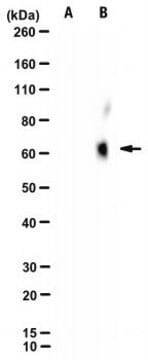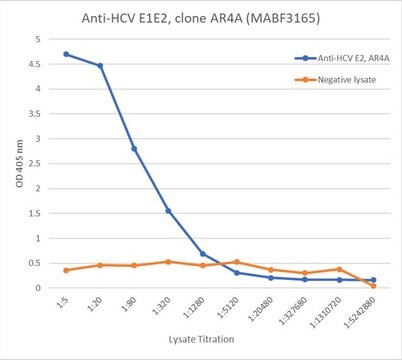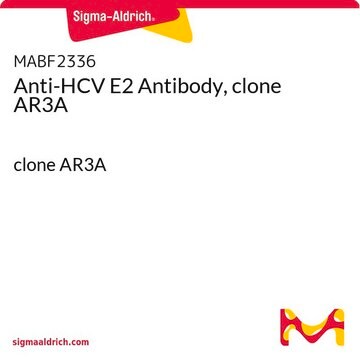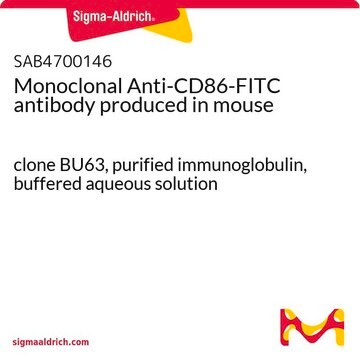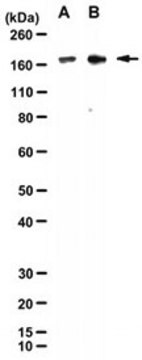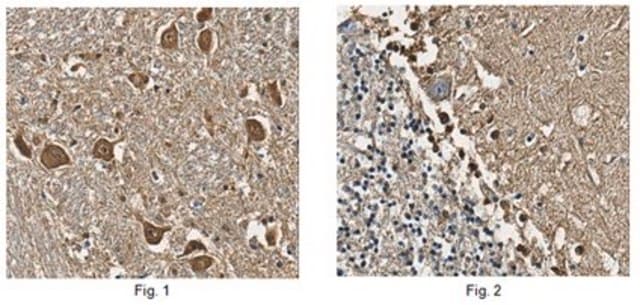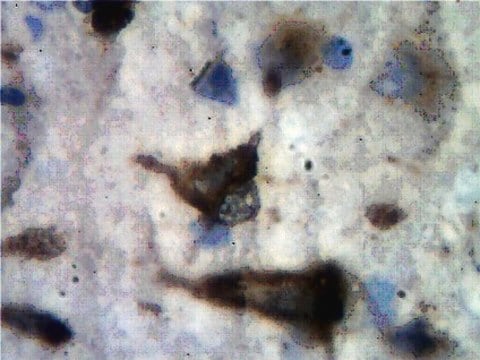MABF3166
Anti-HCV E2 Antibody, clone AR2A
Synonyme(s) :
Genome polyprotein;Envelope glycoprotein E2
About This Item
Produits recommandés
Source biologique
human
Niveau de qualité
Forme d'anticorps
purified antibody
Type de produit anticorps
primary antibodies
Clone
AR2A, monoclonal
Poids mol.
calculated mol wt 327.15 kDa
Produit purifié par
using protein G
Espèces réactives
virus
Conditionnement
antibody small pack of 100 μL
Technique(s)
ELISA: suitable
neutralization: suitable
Isotype
IgG1
Séquence de l'épitope
N-terminal half
Numéro d'accès Protein ID
Numéro d'accès UniProt
Température de stockage
-10 to -25°C
Modification post-traductionnelle de la cible
unmodified
Informations sur le gène
vaccinia virus ... E2(684)
Description générale
Spécificité
Immunogène
Application
Evaluated by ELISA in lysate from HEK293T cells transfected with H77E1E2.
ELISA Analysis (ELISA): Envelope glycoprotein E2 was detected by ELISA in various dilutions of lysates from HEK293T cells transfected with H77E1E2, but not in lysate from untransfected cells.
Tested Applications
ELISA Analysis: A representative lot detected HCV E2 in ELISA applications (Law, M., et al. (2008). Nat Med. 14(1):25-27; Giang, E., et al. (2012). Proc Natl Acad Sci. USA. 109(16):6205-10).
Neutralizing: A representative lot of this antibody neutralized several HCV isolates (Giang, E., et al. (2012). Proc. Natl. Acad. Sci. USA. 109(16):6205-10).
Note: Actual optimal working dilutions must be determined by end user as specimens, and experimental conditions may vary with the end user.
Forme physique
Reconstitution
Stockage et stabilité
Autres remarques
Clause de non-responsabilité
Not finding the right product?
Try our Outil de sélection de produits.
Code de la classe de stockage
12 - Non Combustible Liquids
Classe de danger pour l'eau (WGK)
WGK 2
Point d'éclair (°F)
Not applicable
Point d'éclair (°C)
Not applicable
Certificats d'analyse (COA)
Recherchez un Certificats d'analyse (COA) en saisissant le numéro de lot du produit. Les numéros de lot figurent sur l'étiquette du produit après les mots "Lot" ou "Batch".
Déjà en possession de ce produit ?
Retrouvez la documentation relative aux produits que vous avez récemment achetés dans la Bibliothèque de documents.
Notre équipe de scientifiques dispose d'une expérience dans tous les secteurs de la recherche, notamment en sciences de la vie, science des matériaux, synthèse chimique, chromatographie, analyse et dans de nombreux autres domaines..
Contacter notre Service technique